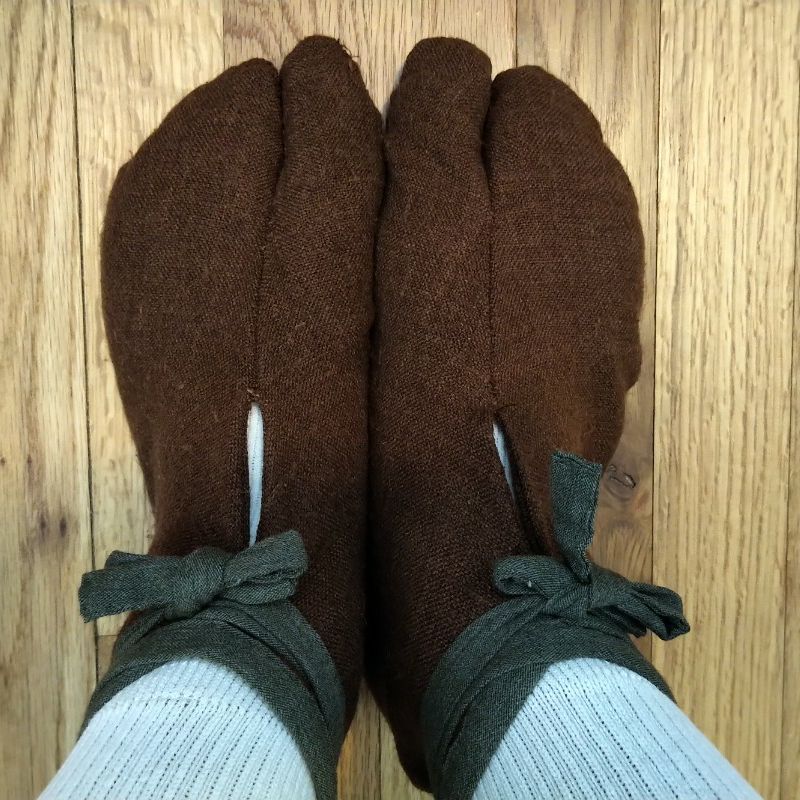I didn’t manage to get my tabi for last year finished until February of this year, but i’m now way ahead of last year when I didn’t finish my 2018 tabi until more than half way through the year.
The uppers and soles of these tabi are made from the same raw silk I used for this suoh. The ties are made from some green linen I had left over from this hapi that I made so long ago. I did save some time making this pair by just overcasting all four layers (two layers of upper, two layers of sole) together at once instead of sewing the inner and outer layers together separately and then joining them with the himo ties. This leaves a raw edge rubbing against the feet, but hiding this edge between layers is bulkier and actually less traditional. Anyway, as you can see in the photo, I usually wear socks inside my tabi.
Just in case you have absolutely no idea what I’m talking about here, tabi aretraditional Japanese footwear. Common tabi are made of two layers of fabric. Modern tabi have closures at the back, but historical tabi close in front and either tie at the top or are tall enough to be held shut by the kyahan. Since they are fabric and you walk on them, they tend to wear out pretty quickly. I try to make a new pair every year so that as old ones fall apart or get too dirty I have new clean ones to take their place. Since they don’t need very much fabric, I usually piece them together from bits of surplus fabric left over from other projects.


